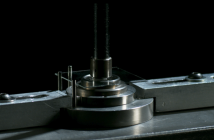Technologies that have been receiving increased attention lately are solid-state memory and solid-state hard drives. Most computer users have experience with using USB “flash drives†to store and transport their files. These devices have, in large part, replaced recordable and re-recordable CDs in file storage because of their larger capacities and increased ease of use. Similar to a USB flash drive, a solid-state drive (SSD) uses the same technology on a more stationary basis. Unlike USB flash drives, SSDs are frequently used in place of a traditional hard disk drive (HDD) and usually offer a larger amount of storage space.
So, what are the benefits of a solid state drives over old fashioned disk drives? Well, one of the most obvious benefits of SSDs over HDDs is that solid state drives do not contain any moving parts. Because hard disk drives rely on spinning disks and moveable heads for reading and writing data, they are susceptible to errors and damage when sustaining physical shock. HDDs in laptops are especially at risk of encountering physical turbulence because they are so frequently moved and transported. Solid state drives can withstand greater physical shock, are quieter, and usually consume less power than hard disk drives.
Although SSDs are valued for their robustness and energy efficiency, its biggest advantage is its speed and responsiveness. Solid state drives have traditionally been used in applications where data access times need to be minimized. Unlike HDDs, they need no time to “spin up†because they have no moving parts. SSDs can immediately read data from any location whereas hard disk drives need time to physically line up their read heads at the right place on the disks, similar to a needle on a record player. HDDs also spread data across different locations on the disks, meaning an increased access time that does not exist with solid state drives.
Although there are many benefits to using an SSD, the newer technology is, perhaps unsurprisingly, more expensive than the older technology of HDDs. Currently, an 80 GB solid state drive might cost about $200 whereas a 2 TB HDD could be purchased for well under that amount; so you can certainly get more raw space for your money with a hard disk drive. However, the speed and reliability of a solid state drive might be more worthwhile if you are using it to run programs and an operating system that can take advantage of SSD technology.
Author Bio: This post has been provided by Nicolas DAlleva. Nicolas is the owner and CTO of Specialty Answering Service, a professional business answering service helping customers across the United States and internationally. Specialty offers basic telephone answering services and complex services such as live chat, telemarketing, and industry specific services such as their doctor answering service.





1 Comment
Pingback: SSD vs Regular Hard Disk | All About Solid State Drives (SSD)